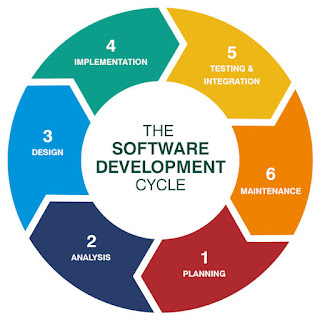The Impact of Scrum on Product Development Speed and Quality
In the fast-paced world of
software development, businesses are constantly seeking ways to deliver
products quickly without compromising quality. Scrum, a popular Agile
framework, has emerged as a powerful approach to achieving this balance. By
emphasizing iterative development, collaboration, and continuous improvement,
Scrum significantly impacts both the speed and quality of product development.
Accelerating Development Speed
with Scrum
One of the primary reasons
organizations adopt Scrum is its ability to accelerate development timelines.
Traditional project management methodologies, like Waterfall, follow a linear
and sequential approach. Each phase—planning, design, development, testing, and
deployment—must be completed before moving on to the next. While this method
offers structure, it often leads to delays and prolonged timelines, especially
when issues are discovered late in the process.
Scrum, on the other hand,
embraces an iterative approach. Work is divided into short, time-boxed
intervals known as Sprints, typically lasting two to four weeks. Each Sprint
results in a potentially shippable product increment. By breaking down
development into smaller, manageable chunks, Scrum enables teams to deliver
functional components of a product more frequently. This frequent delivery
allows for quicker feedback and adjustments, reducing the time it takes to
bring a product to market.
Moreover, Scrum encourages
parallel development processes. Teams can work on different features
simultaneously, rather than waiting for one phase to complete before beginning
the next. This overlap in activities further accelerates development and prevents
bottlenecks.
Enhancing Product Quality with
Scrum
While speed is crucial, quality
cannot be overlooked. Scrum addresses this by integrating quality assurance
into every stage of development. In traditional models, testing is often a
separate phase that occurs after the product has been built. This separation
can lead to significant issues being discovered late, resulting in costly and
time-consuming rework.
In Scrum, testing and quality
checks are continuous. Each Sprint includes activities such as code reviews,
automated testing, and user acceptance testing. This ensures that quality is
maintained throughout the development process, not just at the end. By catching
defects early, teams can address them before they become larger, more complex
problems.
Additionally, Scrum’s emphasis on
collaboration and communication plays a vital role in improving quality. Daily
Scrum meetings, also known as stand-ups, provide a platform for team members to
discuss progress, share challenges, and make necessary adjustments in
real-time. This constant communication ensures that everyone is aligned and
that potential quality issues are identified and resolved quickly.
Another key aspect of Scrum that
contributes to quality is the Sprint Review and Retrospective. At the end of
each Sprint, the team reviews the work completed and gathers feedback from
stakeholders. This feedback loop allows for continuous improvement, enabling
the team to refine their processes and deliver a better product with each
iteration.
Balancing Speed and Quality:
The Scrum Advantage
The true strength of Scrum lies
in its ability to balance speed and quality effectively. By breaking down
development into short, iterative cycles, Scrum allows teams to move quickly
while maintaining a high standard of quality. The framework’s focus on collaboration,
continuous testing, and feedback ensures that the product is both functional
and reliable.
For organizations looking to stay
competitive, adopting Scrum can lead to faster delivery times without
sacrificing the quality of the final product. As businesses continue to
navigate the demands of modern markets, Scrum’s impact on development speed and
quality will remain a valuable asset in the pursuit of excellence.
In conclusion, Scrum provides a
structured yet flexible approach to product development that enhances both
speed and quality. By embracing the principles of Agile and implementing Scrum
practices, organizations can deliver high-quality products to market faster,
meeting customer demands and driving business success.



Comments
Post a Comment